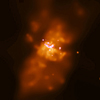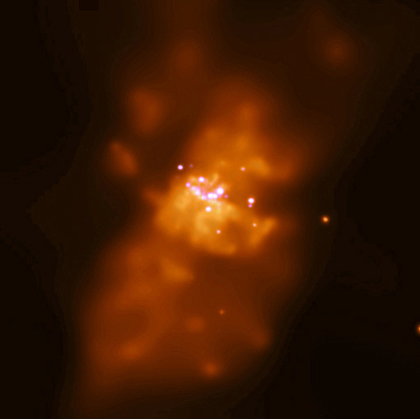Chandra Images Seething Cauldron of Starburst Galaxy
M82, at a distance of 11 million light years from Earth, is the nearest starburst galaxy. Massive stars are forming and expiring in M82 at a rate ten times higher than in our galaxy. The bright spots in the center are supernova remnants and X-ray binaries. These are some of the brightest such objects known. The luminosity of the X-ray binaries suggests that most contain a black hole. The diffuse X-ray light in the image extends over several thousand light years, and is caused by multimillion degree gas flowing out of M82. A close encounter with a large galaxy, M81, in the last 100 million years is thought to be the cause of the starburst activity.
| Multi-wavelength Images: | |||
|---|---|---|---|
X-ray
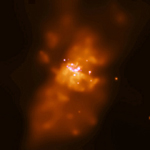 NASA/CXC/SAO NASA/CXC/SAO/PSU/CMU Jpg (82 k) Tiff (2.0 MB) |
Optical
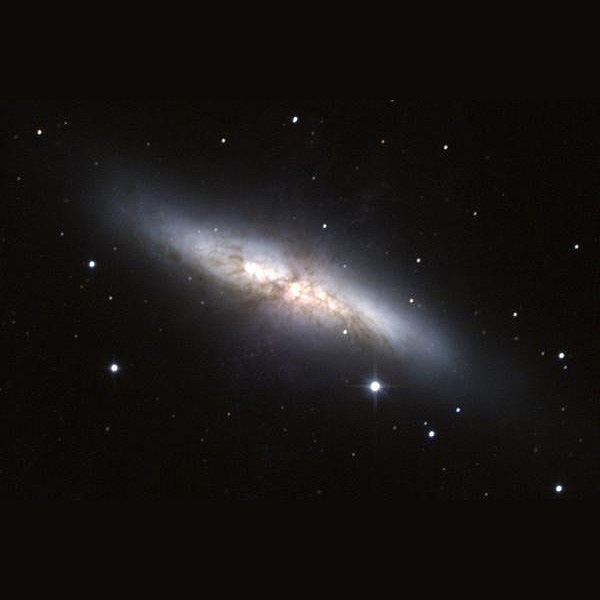 N.A.Sharp,AURA,
N.A.Sharp,AURA,NOAO,NSF Jpg (34 k) |
Infrared
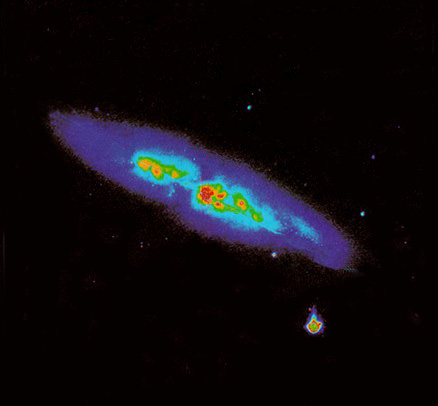 SAO Jpg (28 k) |
Radio
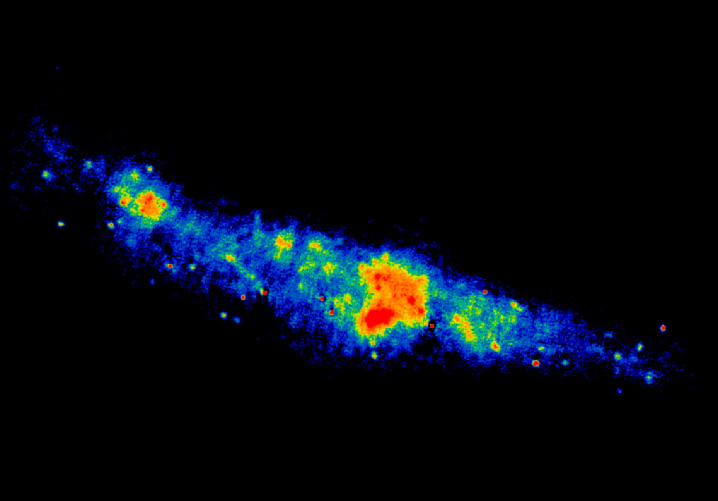 MERLIN & VLA Jpg (75 k) |
|
||||||||||||||||||||||||||||
The image is an X-ray image of a starburst galaxy named M82, which is located about 12 million light-years away in the constellation Ursa Major. This galaxy is known for its intense star formation activity. The image features a bright orange glow in the center of the galaxy, surrounded by darker areas. The bright spots in the center are supernova remnants and X-ray binaries. These are some of the brightest such objects known. The luminosity of the X-ray binaries suggests that most contain a black hole. The diffuse X-ray light in the image extends over several thousand light years, and is caused by multimillion degree gas flowing out of M82. A close encounter with a large galaxy, M81, in the last 100 million years is thought to be the cause of the starburst activity. In comparison to familiar everyday objects, the X-ray image of M82 resembles a firework explosion, with the orange glow in the center representing bursts of light and energy.



